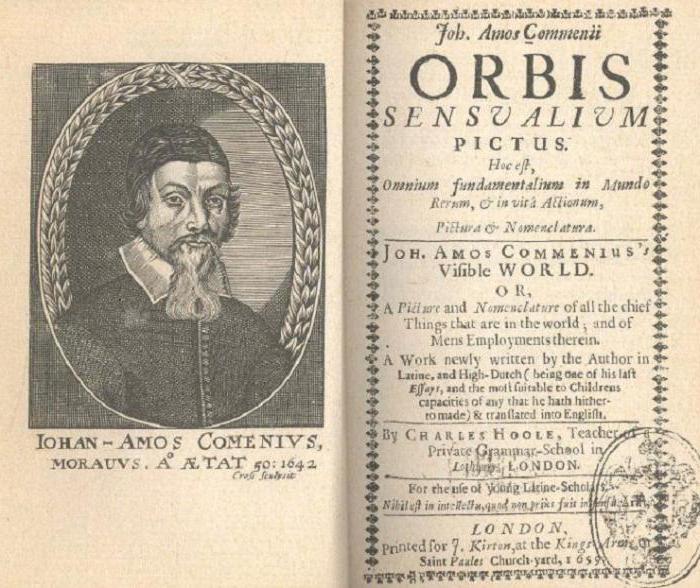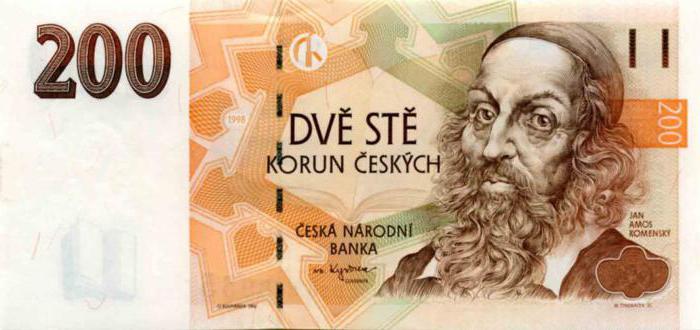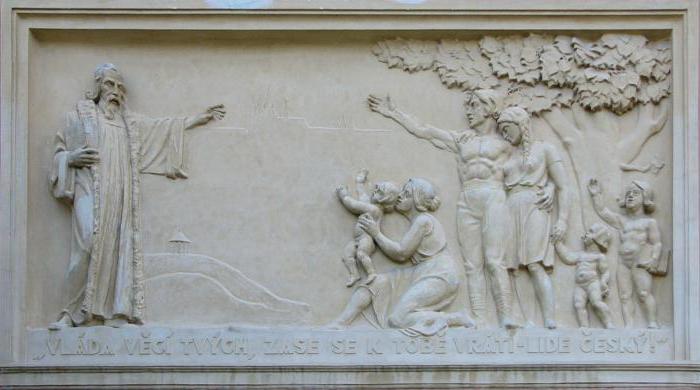Jan Amos Comenius (born 03/28/1592 in Nivnice, Moravia, died 11/14/1670 in Amsterdam, the Netherlands) - a Czech reformer of education and a religious figure. Known for innovative teaching methods, in particular languages.
Jan Amos Comenius: biography
The youngest of five children, Comenius was born into a moderately wealthy family of devout members of the Protestant community of Bohemian brothers. After the death of his parents and two sisters in 1604, presumably from the plague, he lived with relatives and received a mediocre education until in 1608 he entered the Latin school of Bohemian brothers in Prerov. Three years later, thanks to the patronage of Count Karl Zherotinsky, he, under the influence of Johann Heinrich Alsted, entered the Reformed University in Herborn. Many aspects of Comenius’s thought are very reminiscent of the philosophy of the latter. Alsted, an opponent of Aristotle and a follower of Peter Ramus, was deeply interested in Raimund Lullius and Giordano Bruno, in theology he was a chiliast and worked on the collection of all knowledge in his famous Encyclopedia (1630). After graduating from Heidelberg in 1614, Jan Comenius returned to his homeland, where he first taught at school. But in 1618, two years after his ordination as a priest of the Bohemian brothers, he became a pastor in Fulnek. His first published work, The Grammar of Latin, dates from these years.
The Thirty Years 'War and the Battle of White Mountain in November 1620 had a significant impact on Comenius' life, since most of his work was aimed at returning the land and faith to his people. For the next eight years, he was not safe until the final expulsion of his brothers from the imperial lands brought him to Leszno, Poland, where he had previously visited, agreeing on the possibility of settlement.
Jan Amos Comenius, whose biography over the years was marked by the death of his first wife Magdalena and their two children, married in 1624 for the second time. He finished the “Labyrinth of Light and Paradise of the Heart” in 1623 and Centrum securitatis in 1625, publishing them in 1631 and 1633, respectively, in Czech.
From 1628 to 1641, Jan Comenius lived in Leszno as a bishop for his flock and rector of a local gymnasium. He also found time to work on reforming knowledge and pedagogy, writing and, among other things, for his first big book, Didactica magna. Written in Czech, it was published in 1657 in Latin as part of Opera didactica omnia, which contains most of the works created since 1627.
Another book written by Jan Amos Comenius at that time, Maternal School, is dedicated to the first six years of raising a child.
Unexpected popularity
In 1633, Jan Comenius unexpectedly gained European fame thanks to the publication of Janua linguarum reserata (“The Open Door to Tongues”), which was released the same year. This is a simple introduction to Latin according to a new method based on the principles derived from Wolfgang Ratke and textbooks published by the Spanish Jesuits of Salamanca. The reform of language education, which accelerated and simplified it for everyone, was characteristic of the general reform of humanity and the world, which all chiliasts sought to achieve in the remaining hours before the return of Christ.
Jan Comenius concluded a contract with the Englishman Samuel Hartlib, to whom he sent a manuscript of his Christian Omniscience, called Conatuum Comenianorum praeludia, and then, in 1639, Pansophiae prodromus. In 1642, Hartlieb published an English translation called School Reform. Jan Amos Comenius, whose contribution to pedagogy aroused great interest in certain circles in England, was invited by Hartlieb to London. In September 1641, he arrived in the capital of Great Britain, where he met his supporters, as well as people such as John Pell, Theodore Haack, and Sir Cheney Culpeper. He was invited to stay in England forever; the creation of the Pansof College was planned. But the Irish rebellion soon put an end to all these optimistic plans, although Comenius remained in Britain until June 1642. While in London, he wrote Via Lucis (The Way of the Light), which was distributed in manuscript form in England until it was printed in 1668 in Amsterdam. At the same time, the Czech teacher received an offer from Richelieu to continue his activities in Paris, but instead he visited Descartes near Leiden.

Work in Sweden
In Sweden, Jan Comenius again faced difficulties. Chancellor Oksensherna wanted him to write useful books for schools. Comenius, at the insistence of his English friends, offered to work on the guesthouse. He focused on two problems at the same time, retiring to Elbing in Prussia, while under Swedish rule, between 1642 and 1648. His work Pansophiae diatyposis was published in Danzig in 1643, and the Linguarum methodus nouissima in Leszno in 1648. In 1651, Pansophia was published in English as a model of universal knowledge. His "Natural Philosophy Reformed by the Divine Light", or Lumen divinuem reformatate synopsis (Leipzig, 1633), appeared in the same year. In 1648, returning to Leszno, Comenius became the twentieth and last bishop of the Bohemian Brotherhood (subsequently transformed into Moravian).
Failure in Sharoshpatak
In 1650, teacher Jan Comenius received a call from Prince Sigismund Rakoczi of Transylvania, the younger brother of George II Rakoczi, to come to Sharoshpatak for consultations on school reform and boarding school. He introduced many changes to the local school, but despite hard work, his successes were small, and in 1654 he returned to Leszno. At the same time, Comenius prepared one of his most famous works, Orbis sensualium Pictus (The Sensual World in Pictures, 1658), in Latin and German. It is important to note that the work was opened with an epigraph from Genesis, when Adam gave names (Genesis 2: 19-20). This was the first school book in which images of objects were used to teach languages. She illustrated the fundamental principle professed by Jan Amos Comenius. Briefly, it sounds like this: words must be accompanied by things and cannot be studied separately from them. In 1659, Charles Hoole published an English version of the textbook, “The visible world of Comenius, or the Image and a list of all the main things that exist in the world, and human occupations.”
The lack of success at Sharoshpatak is probably due in large part to the fascination with the fantastic prophecies of visionary and enthusiast Nikolai Darbik. This is not the first time that Comenius has placed a prophet on the last day - a weakness which other chiliasts succumbed to. They too trusted in the predictions of apocalyptic events and unexpected turns that should happen in the near future, for example, the fall of the Habsburg house or the end of the papacy and the Roman church. The publication of these statements in order to influence political events had a negative impact on the reputation of an outstanding teacher.
Last years
Soon after the return of Comenius to Leszno, a war broke out between Poland and Sweden, and in 1656 Leszno was completely destroyed by Polish troops. He lost all his books and manuscripts and was again forced to leave the country. He was invited to settle in Amsterdam, where he spent the remaining years of his life in the house of the son of his former patron Lawrence de Geer. During these years, he completed a great work that occupied him for at least twenty years, De rerum humanarum emendatione consultatio catholica. A seven-part book summed up his life and became a comprehensive discussion on improving human things. The Pampedias, the instructions for universal education, are preceded by the Pansophia, its foundations, followed by the Panglottia, the instructions for overcoming the mixing of languages, which will make the final reformation possible. Although some parts of the work were published back in 1702, it was considered lost until the end of 1934, when the book was found in Galle. It was first published in full in 1966.
Comenius is buried in the Church of Wallonia in Naarden, near Amsterdam. His thoughts were highly appreciated by German pietists of the XVIII century. In his own country, he occupies a prominent place as a national hero and writer.
Way of light
Jan Amos Comenius devoted his works to the quick and effective reform of all things related to human life in the sphere of religion, society and knowledge. His program was “The Way of Light”, designed to ensure the maximum possible enlightenment of man before his early return to the earthly millennial kingdom of Christ. The universal goals were piety, virtue, and knowledge; wisdom was achieved by succeeding in all three.
Thus, the source and purpose of all the work of Comenius was theology. His beliefs and aspirations were shared by many of his contemporaries, but his system was, of course, the most complete of the many that were proposed in the XVII century. It was, in essence, a recipe for salvation through knowledge raised to the level of universal wisdom, or pansofia, supported by an appropriate educational program. The divine order of things at that time, when it was believed that the last century was coming, corresponded to the possibility of achieving universal reform through the invention of the press, as well as the expansion of shipping and international trade, which for the first time in history promised the worldwide spread of this new, reforming wisdom.
Since God is hiding behind his work, man must open himself to three revelations: the visible creation, in which the power of God is manifested; a man created in the image of God and showing evidence of his divine wisdom; In short, with his promise of goodwill towards man. Everything that a person should know and not know should be extracted from three books: nature, mind or spirit of man and Scripture. To achieve this wisdom, he is endowed with feelings, reason and faith. Since man and nature are God's creations, they must share the same order, a postulate that guarantees the complete harmony of all things between themselves and with the human mind.
Know yourself and nature
This well-known doctrine of macrocosm-microcosm gives confidence that a person is really capable of gaining still unrealized wisdom. Everyone thus becomes a pansophist, a little god. Gentiles who lack the manifest word cannot achieve this wisdom. Even Christians, until recently, were lost in a maze of errors due to tradition and under the influence of a stream of books that at best contain scattered knowledge. A person should only turn to divine works and learn in direct collision with things - with the help of an autopsy, as Comenius called it. Ian Amos based his pedagogical ideas on the fact that all learning and knowledge begin with feelings. It follows that the mind has innate representations that make a person able to comprehend the order with which he is faced. The world and life of each individual is a school. Nature teaches, the teacher is a servant of nature, and naturalists are priests in the temple of nature. Man must know himself and nature.
Encyclopedia of Omniscience
To find a way out of the maze, a person needs Ariadne’s thread, a method by which he will see the order of things, understanding their causes. This method should be introduced in a book about Pansophia, in which the order of nature and the order of mind will gradually move towards wisdom and insight. It will contain nothing but concrete and useful knowledge, replacing all other books. A complete record of information, organized in this way, is a real encyclopedia, in many respects coinciding with the “repository” of Robert Hooke of natural wonders in the Royal Society, organized in accordance with the categories of John Wilkins in his “Experience of genuine symbolism and philosophical language”. Following this natural method, people can easily gain full and comprehensive possession of all knowledge. The result will be true universality; and again there will be order, light and peace. Thanks to this transformation, man and the world will return to a state similar to that which was before the fall.

Innovation in Education
Jan Comenius, whose pedagogy demanded that the child learn to compare things and words from early childhood, considered his native speech the first acquaintance with reality, which should not be obscured by empty words and poorly understood concepts. At school, foreign languages - primarily from neighboring countries, and then Latin - should be studied in their native language, and school books should follow the method of boarding school. Door to Tongues will offer the same material as Door to Tongues, and both will be small encyclopedias. School books should be divided by age groups and concern only those things that are within the limits of the child’s experience. Latin is best suited for general communication, but Comenius was eagerly awaiting the emergence of a perfect philosophical language that would reflect the method of Pansophia, not be misleading, and would not be uninformative. Language is simply a carrier of knowledge, but its proper use and teaching are sure means of attaining light and wisdom.
Life is like a school
Jan Comenius, whose didactics was directed not only towards formal school education, but also to all age groups, believed that all life is a school and preparation for eternal life. Girls and boys must study together. Since all people have an innate desire for knowledge and piety, they must be trained in a spontaneous and playful manner. Corporal punishment should not be applied. Poor study is not the fault of the student, but testifies to the teacher’s inability to fulfill his role as a "servant of nature" or "obstetrician of knowledge," as Comenius said.
Jan Amos, whose pedagogical ideas were considered the most significant and, possibly, his only contribution to science, himself considered them only a means of universal transformation of mankind, the basis for which was pansophia, and theology was the only guiding motive. The abundance of biblical quotes in his works is a constant reminder of this source of inspiration. Ian Comenius considered the books of Daniel's prophecies and revelations of John to be the main means of acquiring knowledge for the inevitable millennium. The story of Adam giving names in "Genesis" and the wisdom of Solomon formed his idea of a man and his conviction in the order, which was reflected in the Pansophia, because God "arranged everything with measure, number and weight." He relied on the complex metaphorical and structural properties of the temple of Solomon. For him, man was, like Adam, at the center of creation. He knows all nature and thus controls and uses it. Therefore, the transformation of man was only part of the complete transformation of the world, which would recreate its original purity and order and would be the ultimate tribute to its creator.

Man of his time
Jan Amos Comenius made no contribution to natural science and was deeply alien to the development of science, which was taking place at that time. Other evaluations of his work were made, but they completely ignored his dependence on a priori postulates and his theological orientation. On the other hand, several prominent members of the Royal Society showed a close relationship with most of his thoughts. The motto of society Nullius in Verba occupies a significant place in Comenius' book "Natural Philosophy Transformed by Divine Light," and in both contexts it has the same meaning. This is a reminder that tradition and authority are no longer arbiters of truth. It is given to nature, and observation is the only source of concrete knowledge. The widely discussed problem of the relationship between Comenius and the early Royal Society has not yet been resolved, mainly because the discussion of this issue is based on meager acquaintance with his works and almost complete ignorance of his correspondence.
Allegations of the influence of the Czech reformer on Leibniz are greatly exaggerated. He was such a typical manifestation of the beliefs, doctrines and problems of the time that the same thoughts were expressed by others, occupying a more significant place in Leibniz's early works. Jan Amos Comenius got his ideas from the theology of the Bohemian brothers (with their strong chiliastic tendencies), as well as from such famous personalities as Johann Valentin Andree, Jacob Boehme, Nikolai Kuzansky, Juan Luis Vives, Bacon, Campanella, Raimund de Sabund (Theologia naturalis which he published in Amsterdam in 1661 under the name Oculus fidei) and Mersenne, whose correspondence indicates a positive attitude towards Comenius and his work.